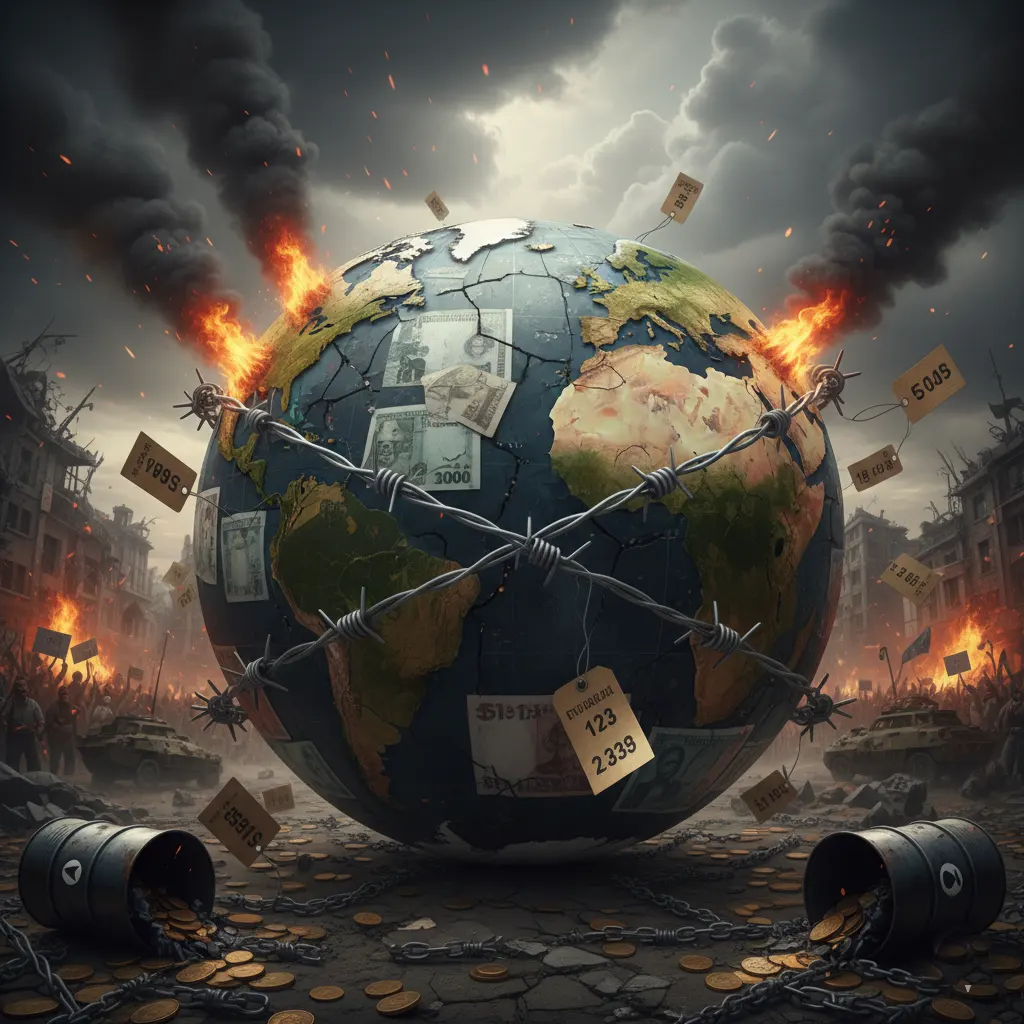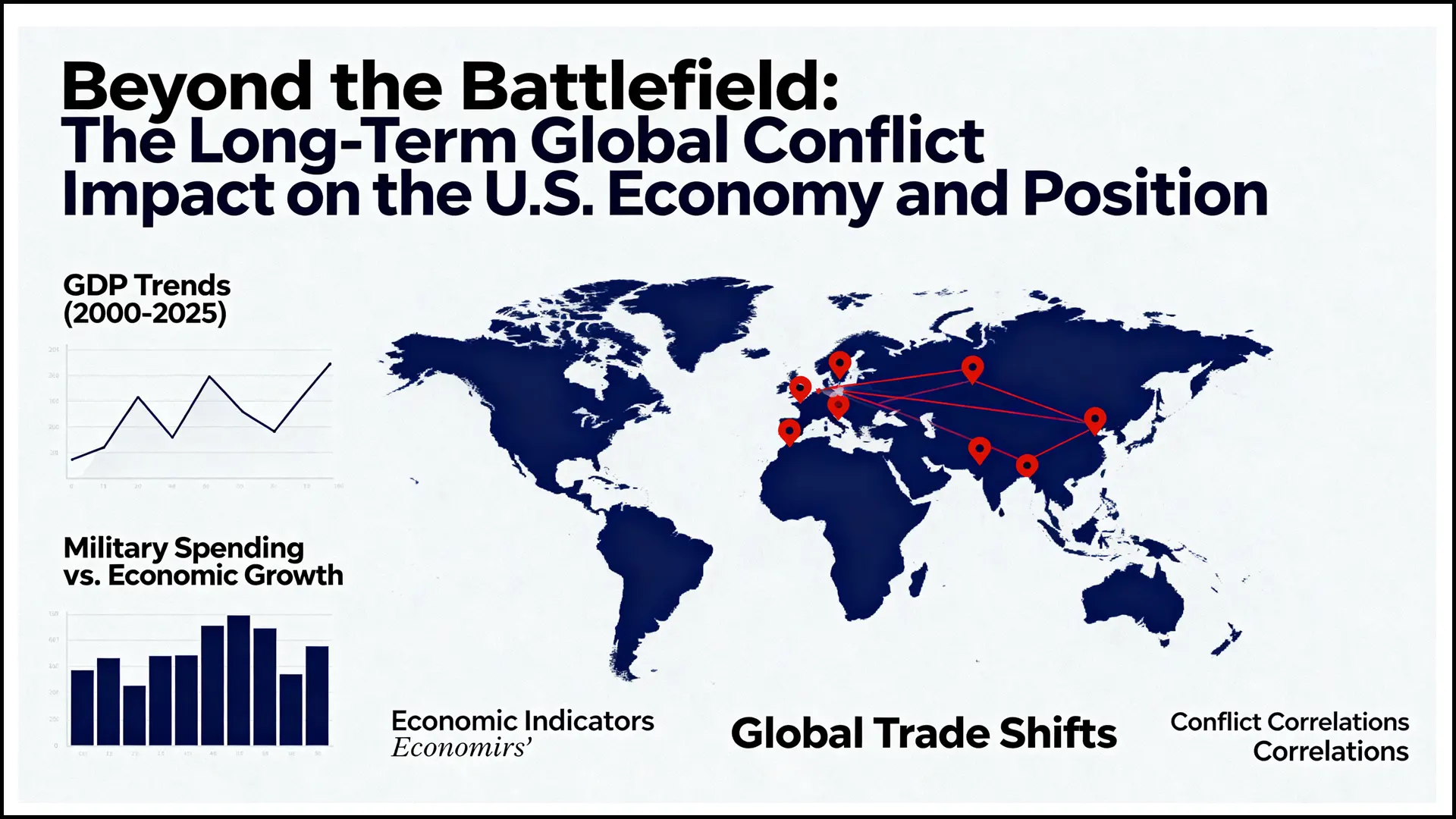When we think of war, images of soldiers and distant battlefields often come to mind. For Americans, large-scale conflict has felt far away for decades. However, in our interconnected world, the economic aftershocks of global instability are felt profoundly at home. We feel them in our wallets, at our gas pumps, and in our nation’s global standing.
The era of conflicts staying in one region is over. The war in Ukraine, tensions in the South China Sea, and Middle East instability are not just headlines. Instead, they are powerful forces reshaping the U.S. economy and challenging its global leadership. Consequently, the real battle is now fought in finance, energy, and supply chains.
The Economic Domino Effect: Inflation, Debt, and Rearmed Alliances
1. The Inflationary Shockwave
The most immediate impact on everyday Americans is inflation. Conflict disrupts the global flow of essential goods. For example, the war in Ukraine sent wheat and sunflower oil prices soaring. Similarly, sanctions on Russia triggered volatility in global oil and gas markets. This directly led to higher prices at the pump.
This “geopolitical inflation” makes existing domestic pressures worse. As a result, the Federal Reserve faces a painful balancing act. It must curb inflation with higher interest rates, but it also must avoid tipping the economy into a deep recession. You can track these pressures through the Bureau of Labor Statistics’ Consumer Price Index (CPI).

2. The Ballooning National Debt
Projecting U.S. military power is expensive. Direct aid to allies, like Ukraine and Israel, adds billions to the federal budget. Furthermore, great-power competition demands more spending on new technologies like hypersonic weapons and cyber defense.
This military spending supports the defense industry in states like Texas and Virginia. However, it is largely funded by debt. Adding hundreds of billions to the national debt, tracked by the U.S. Treasury, has a long-term cost. It constrains future investment in domestic needs like infrastructure, education, and healthcare. This creates a trade-off between national security and national vitality.
3. Supply Chain Re-Armed
The pandemic exposed fragile global supply chains. Now, ongoing conflict is permanently rewiring them. The concept of “friend-shoring”—moving supply chains to allied nations—has become a corporate imperative.
For the U.S., this presents both a challenge and an opportunity.
- Challenge: Decoupling from Chinese manufacturing is complex and costly. This is especially true for critical goods like semiconductors and pharmaceuticals, potentially leading to higher prices.
- Opportunity: It accelerates the reshoring of advanced manufacturing to the U.S.. Initiatives like the CHIPS Act are a direct response. They aim to create high-tech jobs and secure America’s economic sovereignty.
America’s Shifting Position on the Global Stage
The economic impacts are directly linked to a reassessment of America’s global role.
1. The Leader of the Democratic Bloc
In response to aggression, the U.S. has expanded its alliances. For instance, NATO is now stronger and larger. Partnerships in the Indo-Pacific, like the Quad and AUKUS, are also deepening. Therefore, America is consolidating its role as the central pillar of a coalition of democracies.
2. The Dollar’s Double-Edged Sword
The U.S. dollar’s role as the world’s primary currency is a source of power. It allows America to finance debt cheaply and use sanctions as leverage. However, this weaponization of the dollar has a downside. Rivals like China and Russia are now exploring alternative financial systems. While the dollar’s dominance is safe for now, this long-term erosion could diminish a key pillar of U.S. influence. The International Monetary Fund (IMF) tracks these changes.
3. The Innovation Imperative
Ultimately, America’s long-term position depends on its ability to out-innovate competitors. The battle for tech supremacy—in AI, quantum computing, and clean energy—is the new arms race. The leader in these sectors will set the standards and wield the economic power of the future. Therefore, investment in R&D, through agencies like the National Science Foundation (NSF), is no longer just an economic goal. It is a national security imperative.

The Path Forward: Resilience Over Reaction
For the United States, navigating this new landscape requires a strategic shift. We must move from short-term reaction to long-term resilience. This means:
- Investing in Energy Independence: We must embrace a diverse energy portfolio to insulate from global oil shocks. The U.S. Department of Energy is central to this effort.
- Bolstering Economic Durability: We need to strengthen critical supply chains and commit to fiscal responsibility.
- Leading through Innovation: Finally, we must double down on education and research to maintain our technological edge.
The battlefields of the 21st century are in the global financial system and the computer server farm. Therefore, understanding these connections is the first step toward building a nation that is not just secure for today, but positioned to lead for tomorrow.
#USEconomy #GlobalConflict #Geopolitics #Inflation #NationalDebt #SupplyChain #Dollar #ForeignPolicy #USEconomy #EconomicImpact #NationalSecurity


